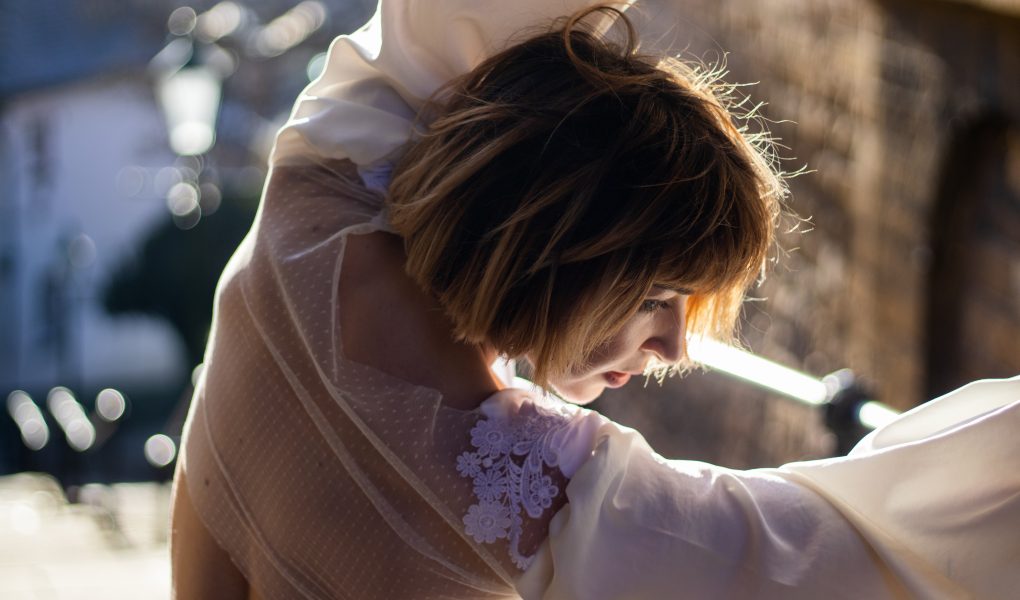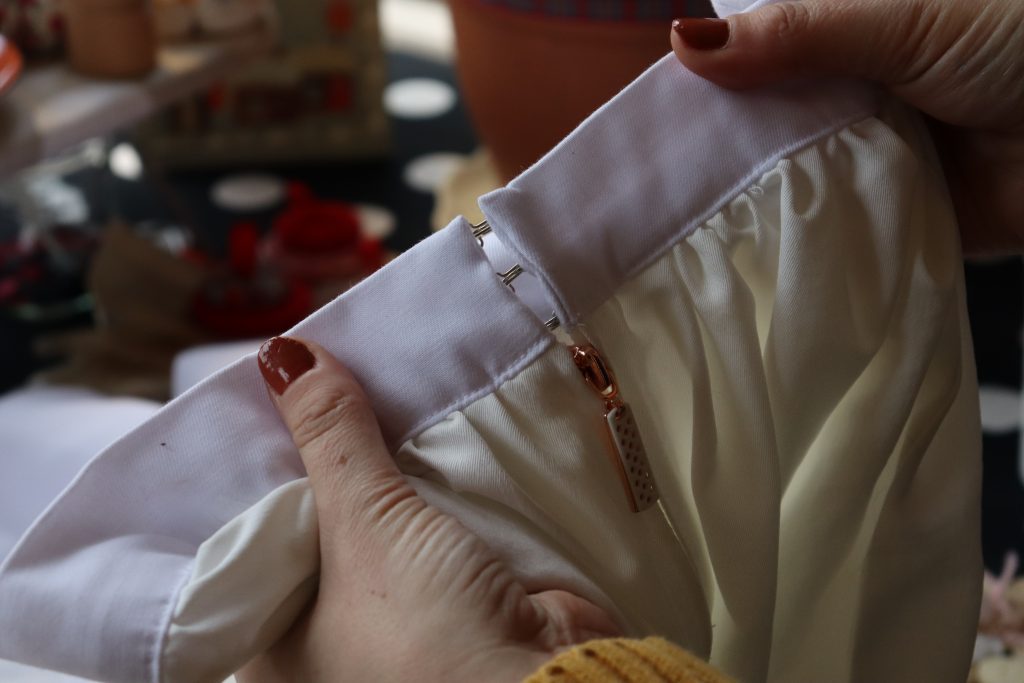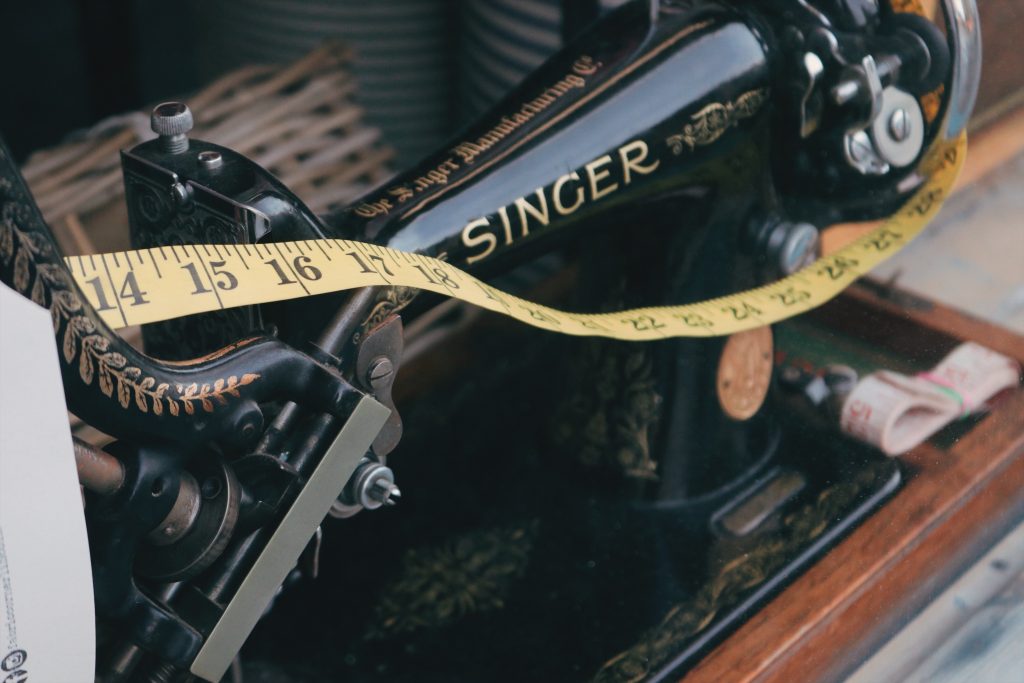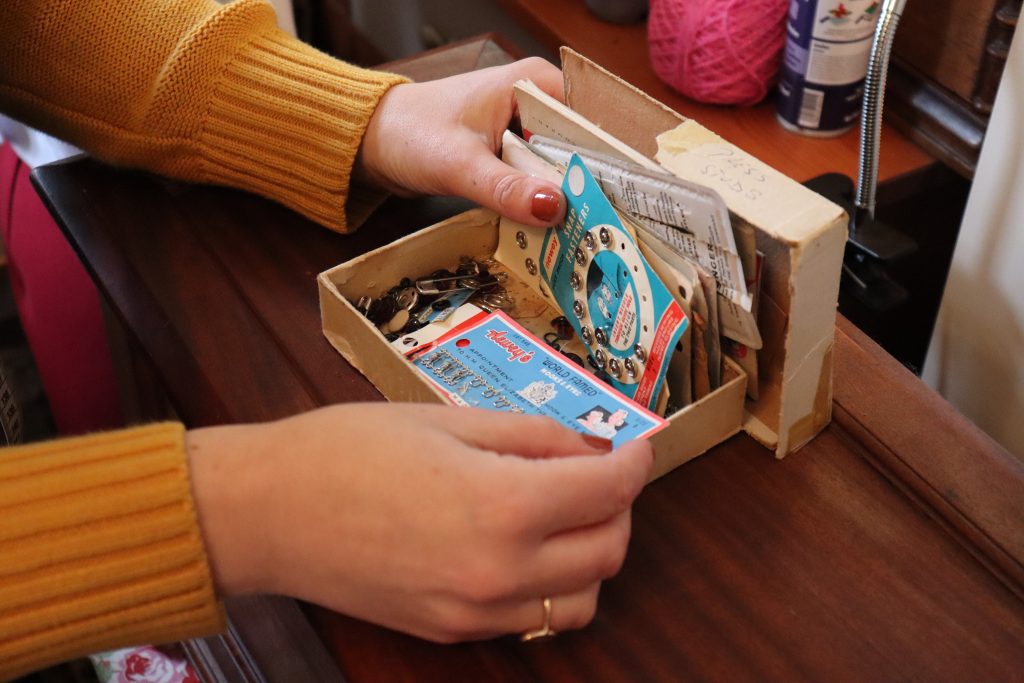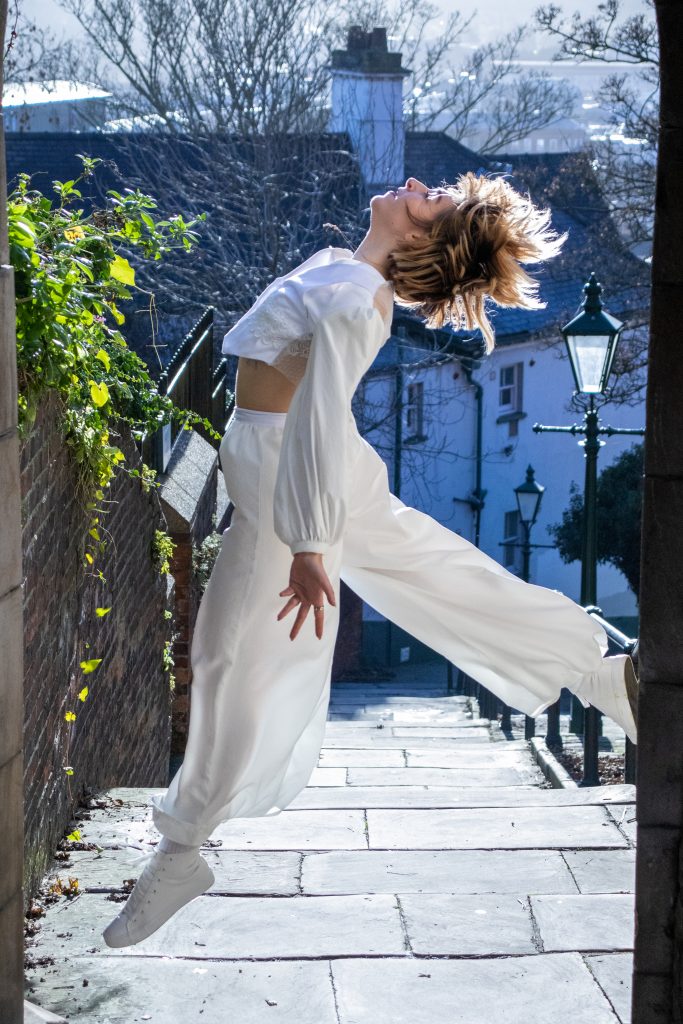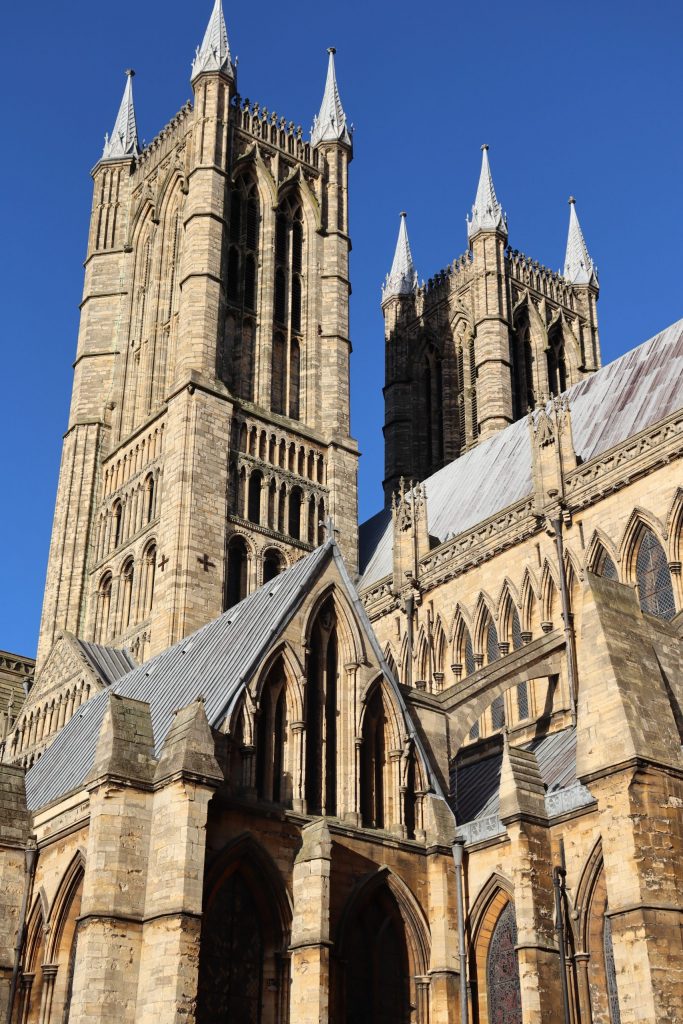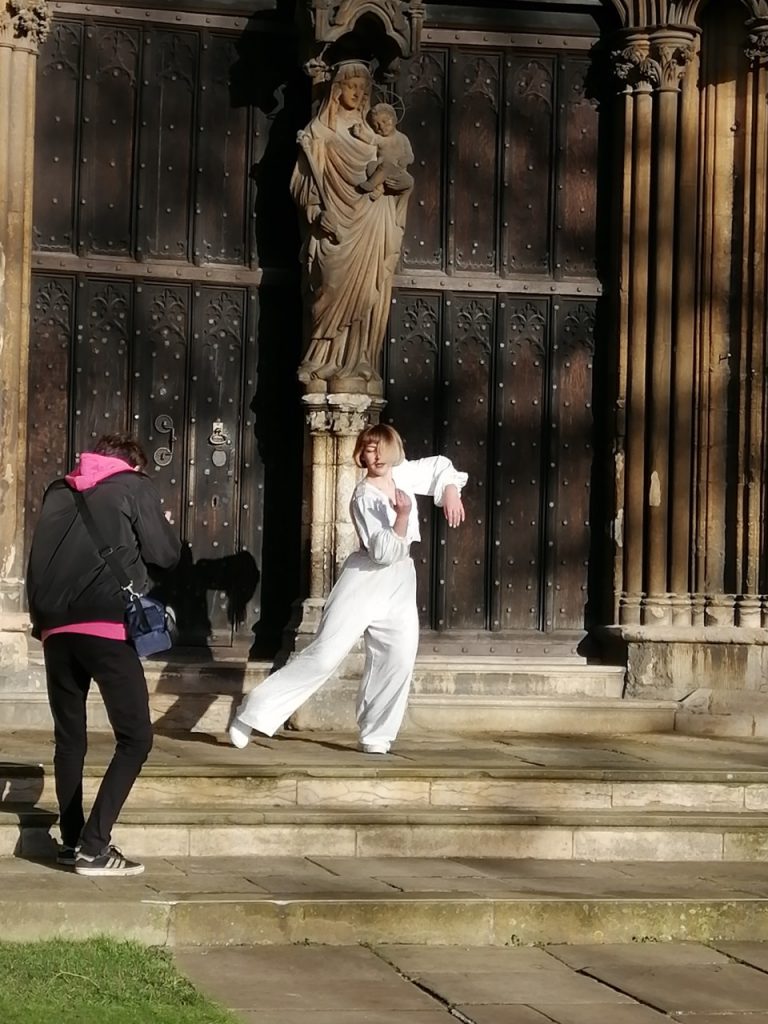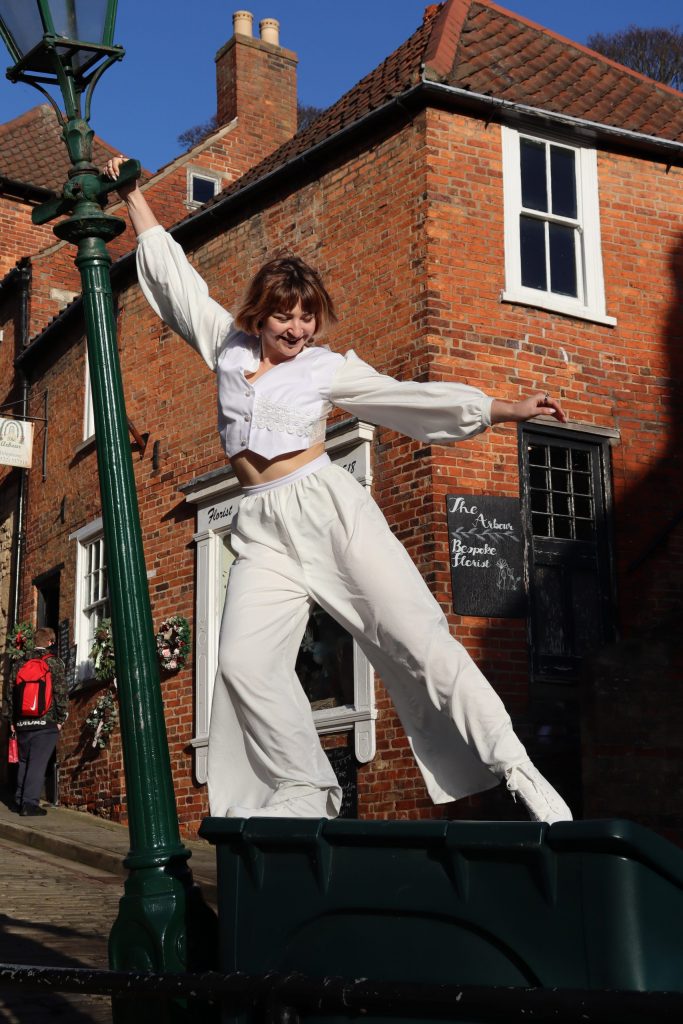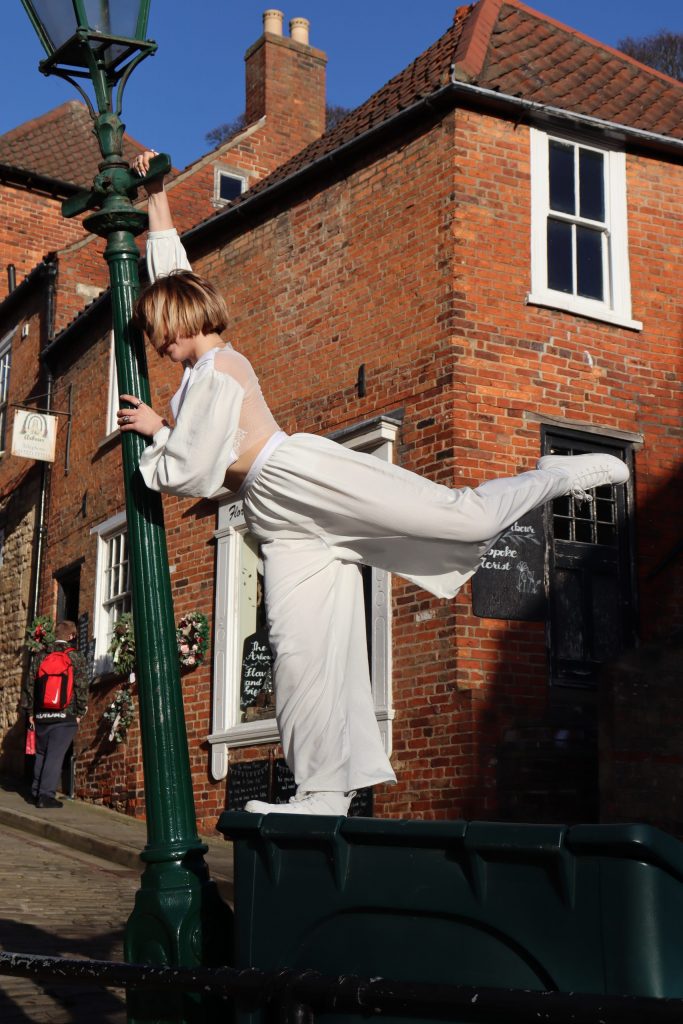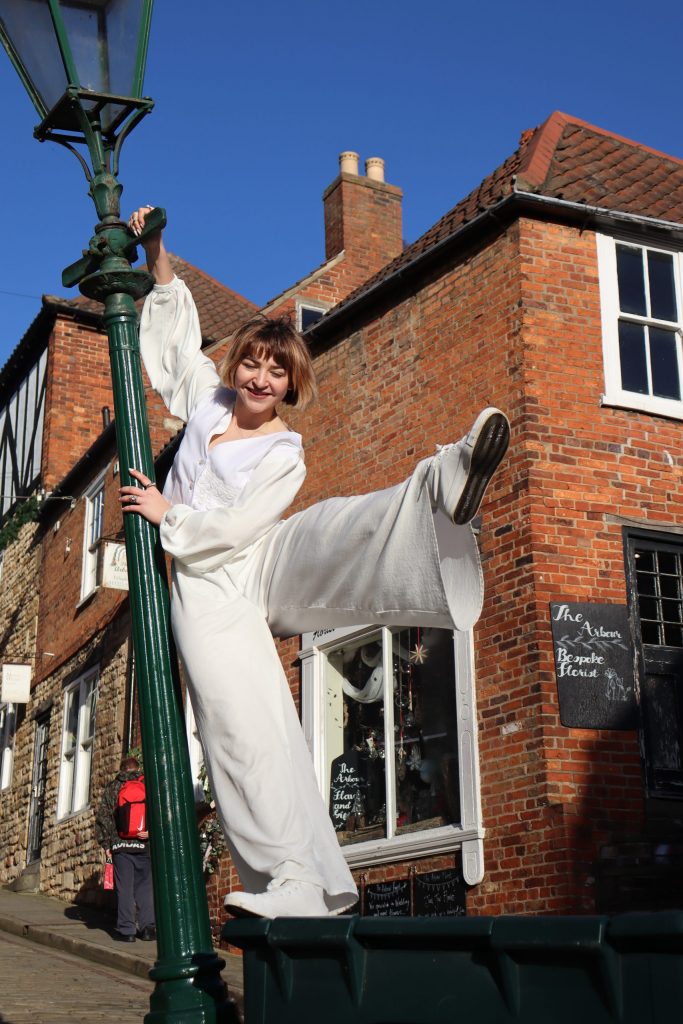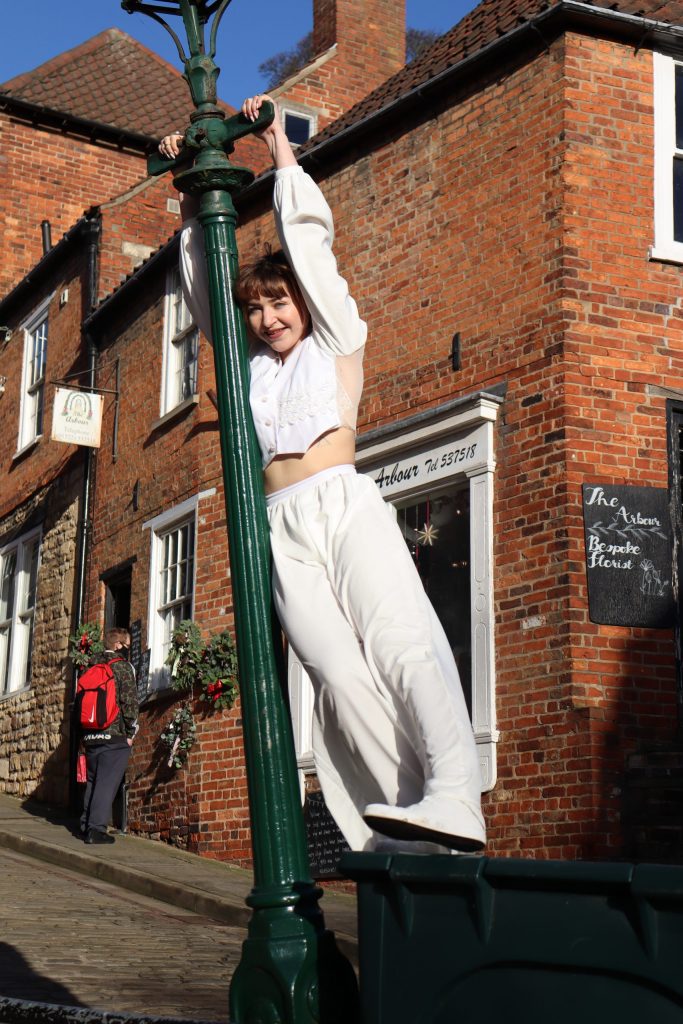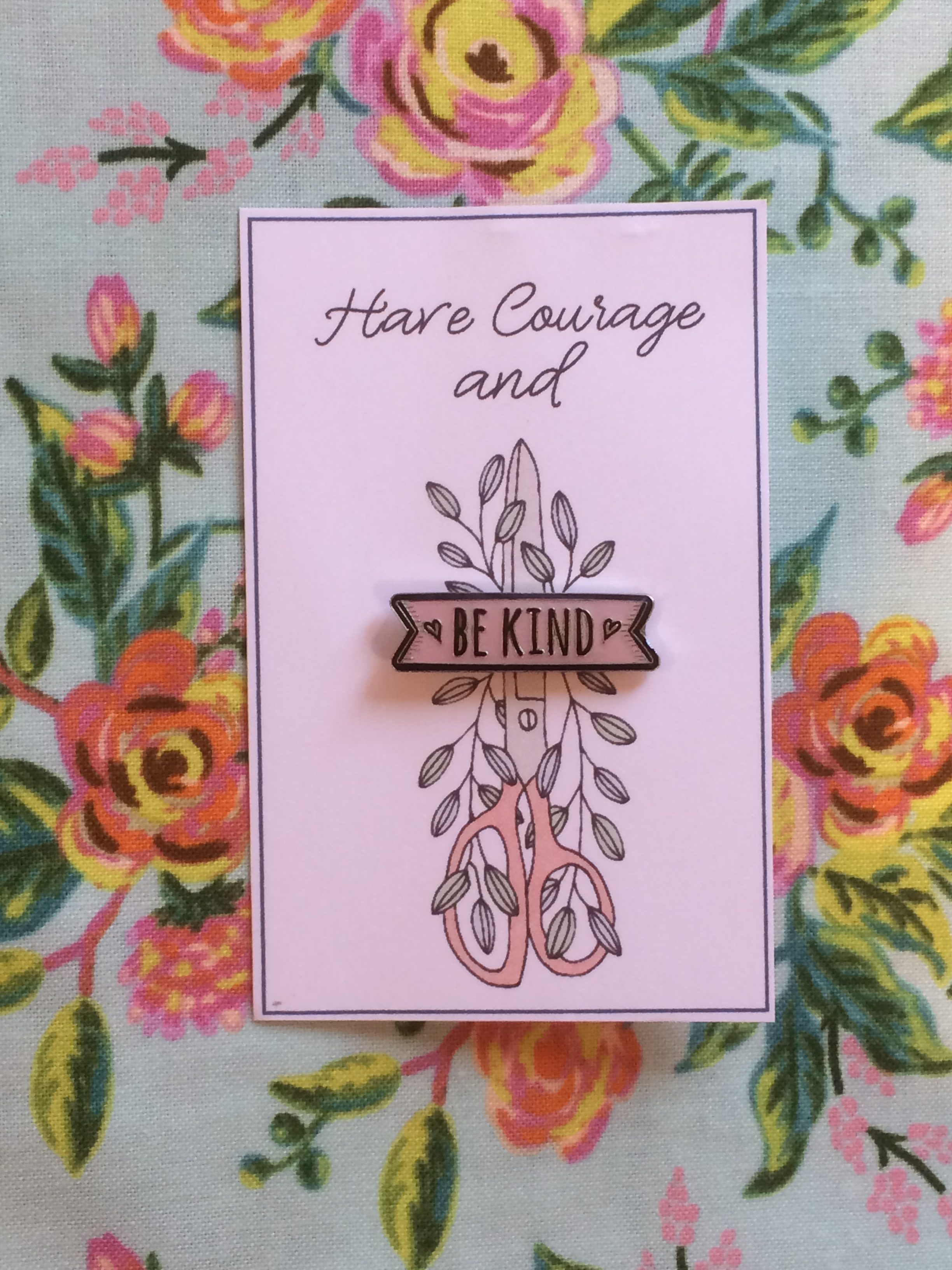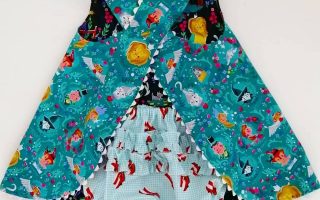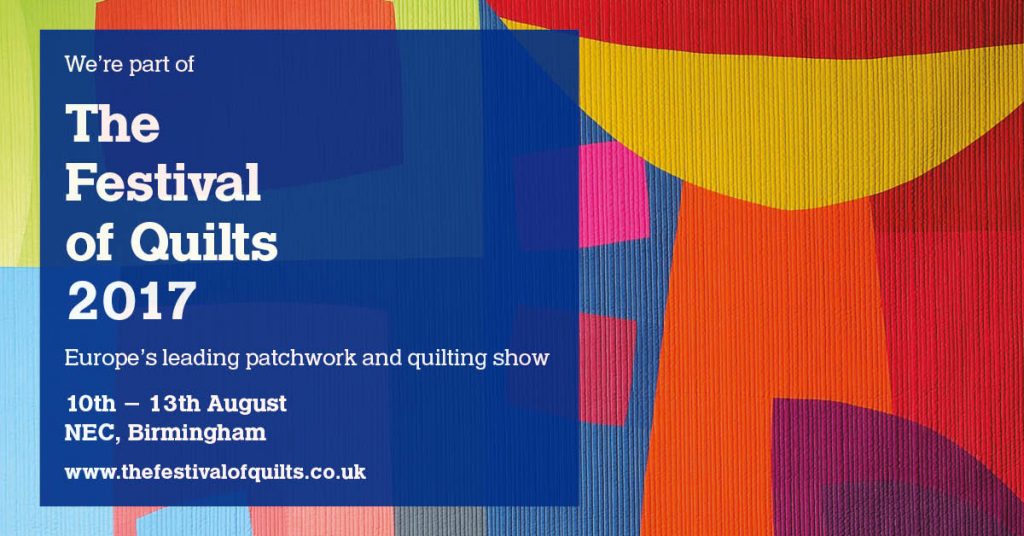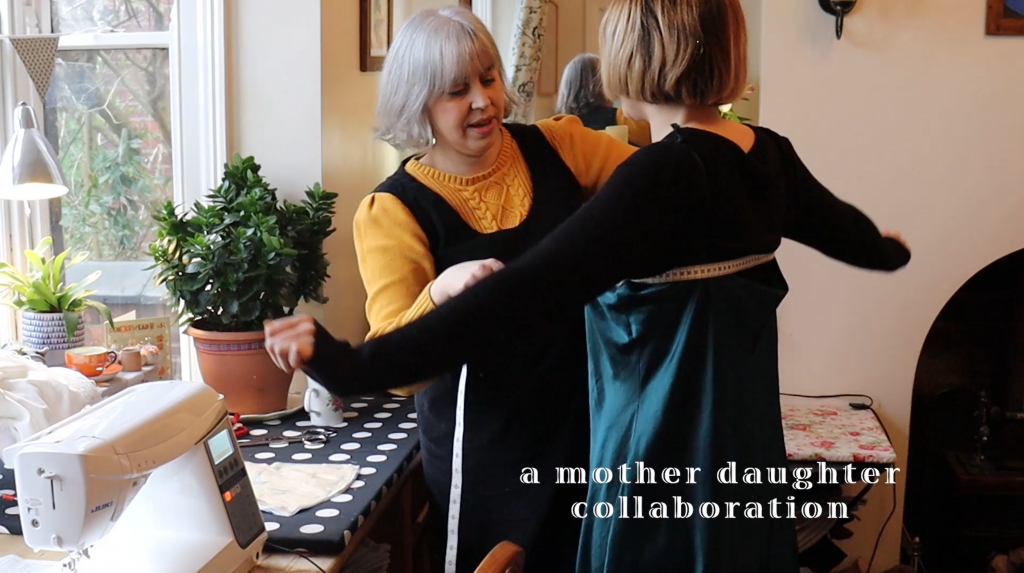
We have a fun mother daughter Dance Costume collab to bring in the New Year. Last month we asked Kay @fabriccornerlincoln and her daughter Sophie who just completed a Dance Degree in Leeds to do a collaboration for us. The pitch was to create a winter white dance costume for Sophie. We wanted some inside information on the design choices that would make the garment suitable for dancing in the streets.
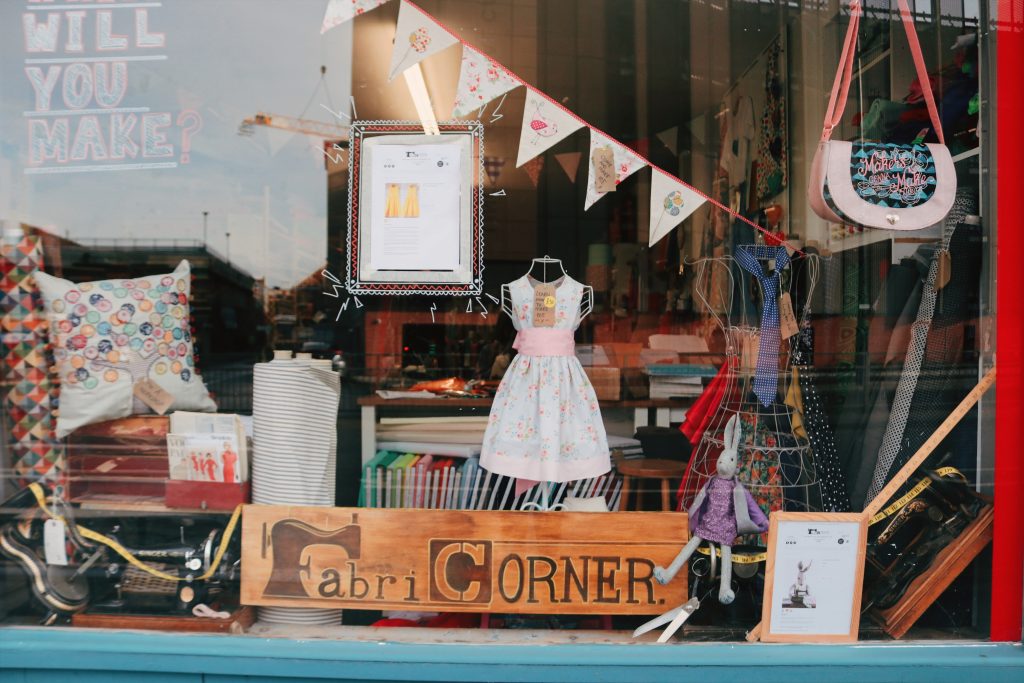
2020 was a rough year for all the performing artists, so we were especially thrilled to feature Sophie in our video clip. Kay owns the Fabric Corner shop in Lincoln a creative oasis alongside The Craftea Cafe that has been nurturing the Lincoln sewing community for years. We thought that they made the perfect mother daughter team. Kay and Sophie began messaging each other about the project. They quickly agreed on a similar style, incorporating layers inspired by historical men’s fashion.
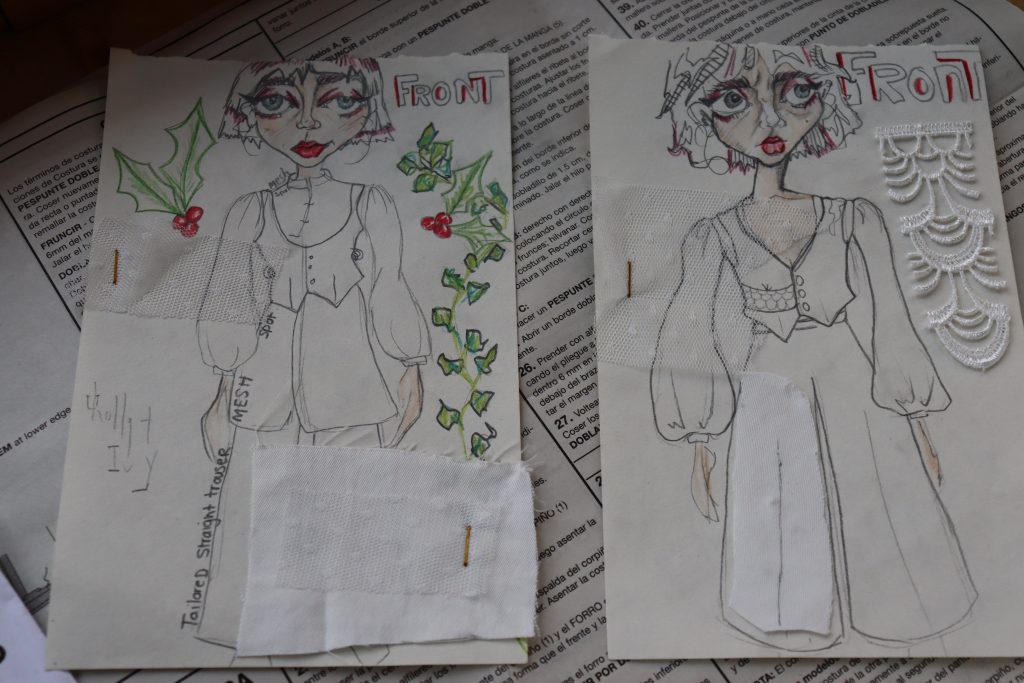
Design Challenges
The challenge was to find fabric that would drape beautifully while showing the body’s line and form. The fabric also needed to fit AND stretch every-which-way to allow for freedom of movement. Sophie and Kay ended up choosing a variety of fabrics; poly silk, a 4 way poly stretch jersey, and a stretch net for the back.
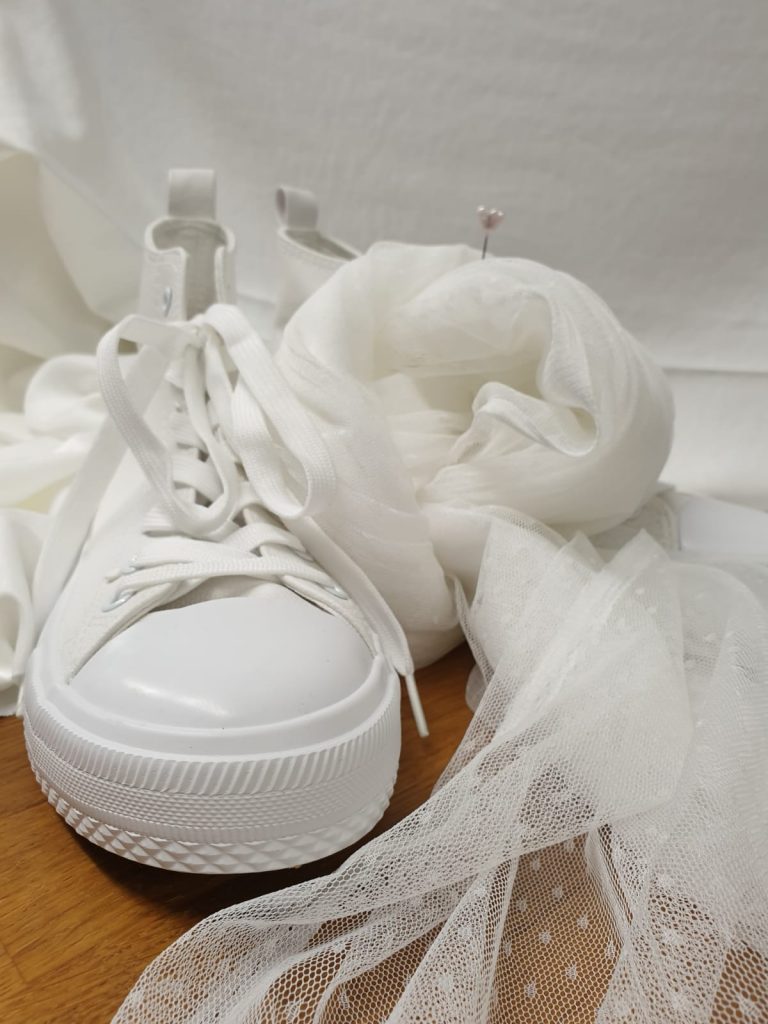
Kay and Sophie worked together to design the shape and structure of the costume. Inspired by a McCalls jumpsuit pattern, they decided to make it two pieces with a layered bodice, and finished it off with buttons and lace for embellishment.
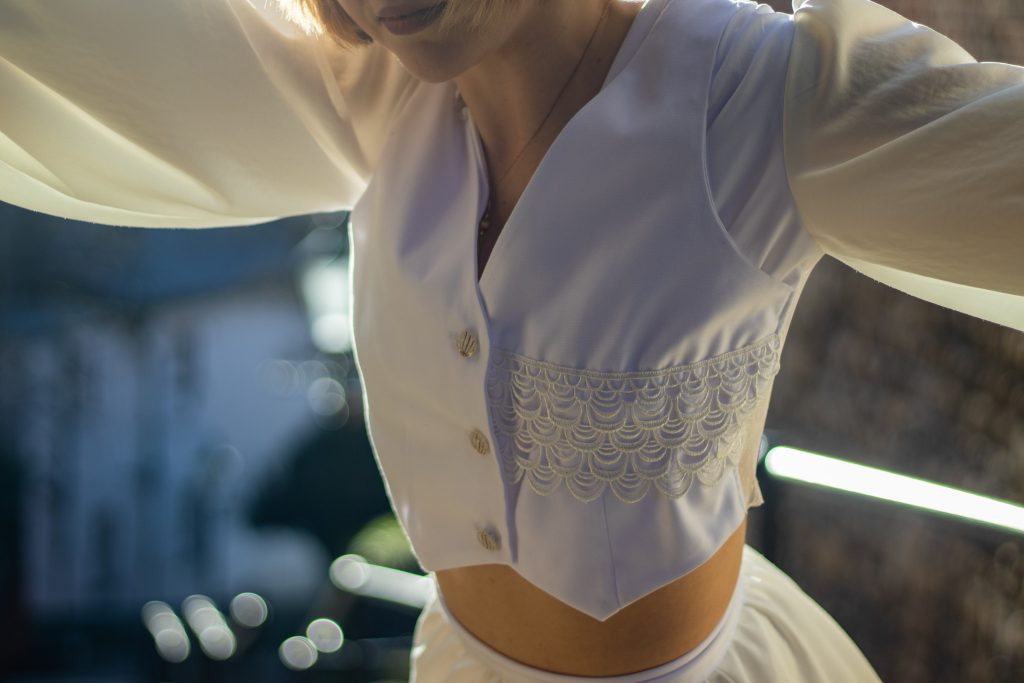
Fabrication
The lightweight floaty fabrics as well as the stretch fabrics presented certain sewing challenges. Kay felt that there were two features on the Juki DX5 that made sewing the lightweight stretch fabrics easier.
- the straight stitch slide plate for lightweight fabrics
- the lightning bolt stitch for stretch fabrics
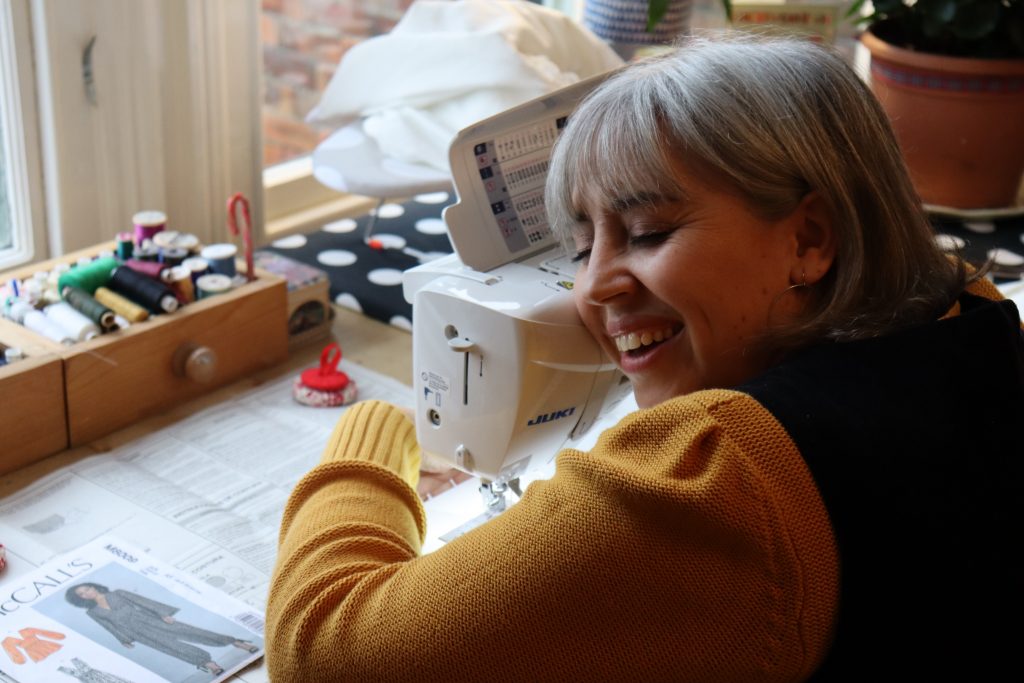
Straight stitch slide plate
There’s a surprising feature on the Juki DX5 and DX7 sewing machines called the straight stitch slide plate. Have you ever noticed when working with light weight fabrics, that they tend to get pushed into the hole in the needle plate? As soon as you use any of the special stitches like the zig zag stitch, the needle hole needs to be wider to accommodate the side to side movement of the needle. Unfortunately, the wider hole in the needle plate can allow the needle to push the lighter weight fabric into the hole. I call this going down the rabbit hole!
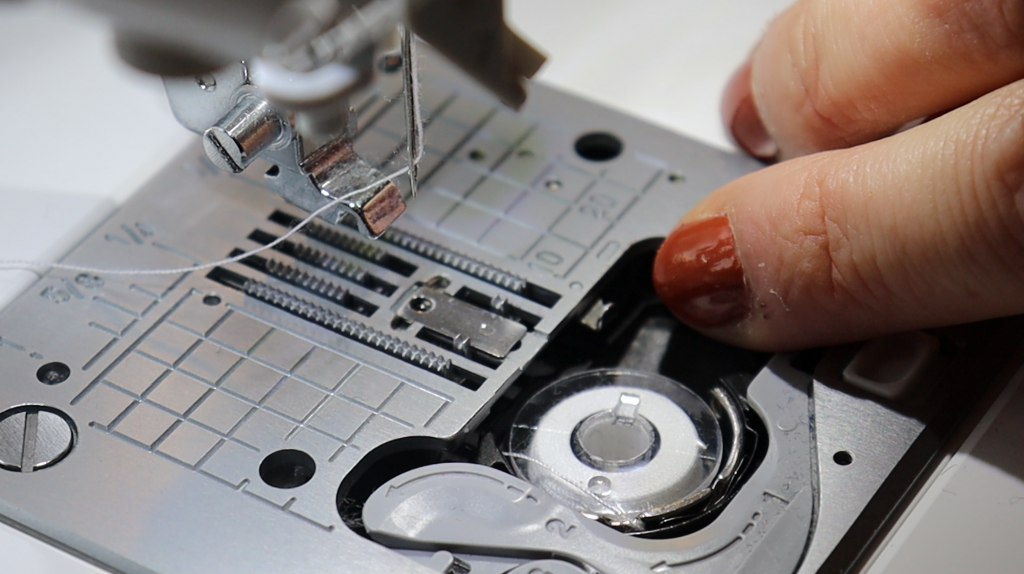
The straight stitch slide plate fixes this problem. There’s a little lever in the bobbin area that allows you to adjust the size of the hole that the needle goes into. This gives you the option to have a dot or a dash shaped aperture. On the right hand there is a dash; a wider hole that accommodates the zigzag and all the other special stitches.
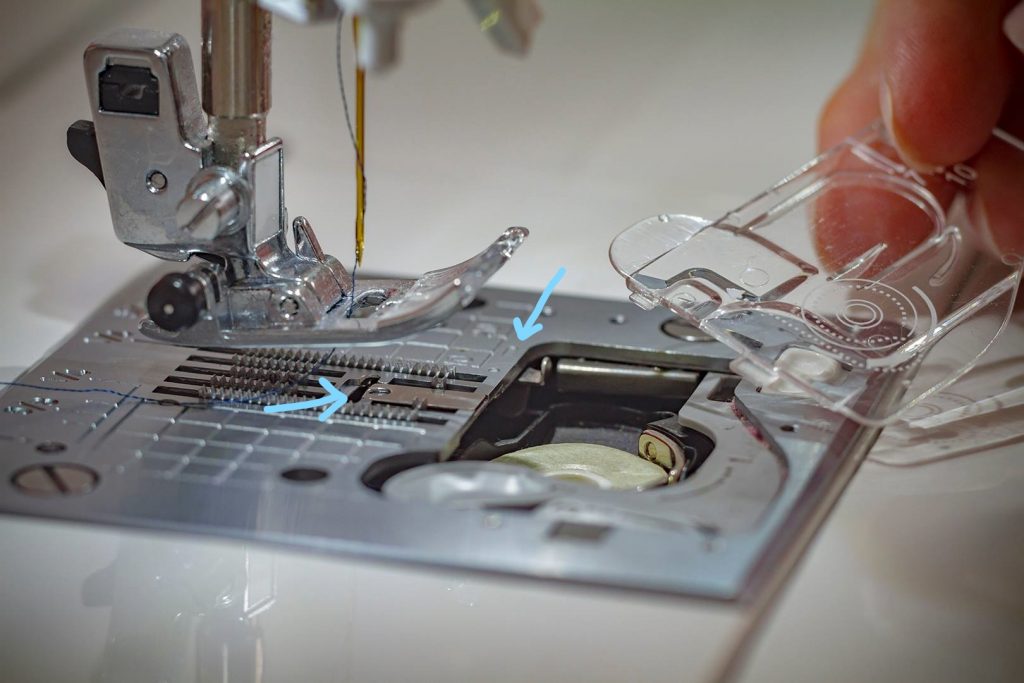
The lever in the wider DASH position
If you slide the lever to the left towards the dot, you get a smaller hole in the needle plate that is ideal for any straight stitching and especially straight stitching with lightweight floaty fabrics.
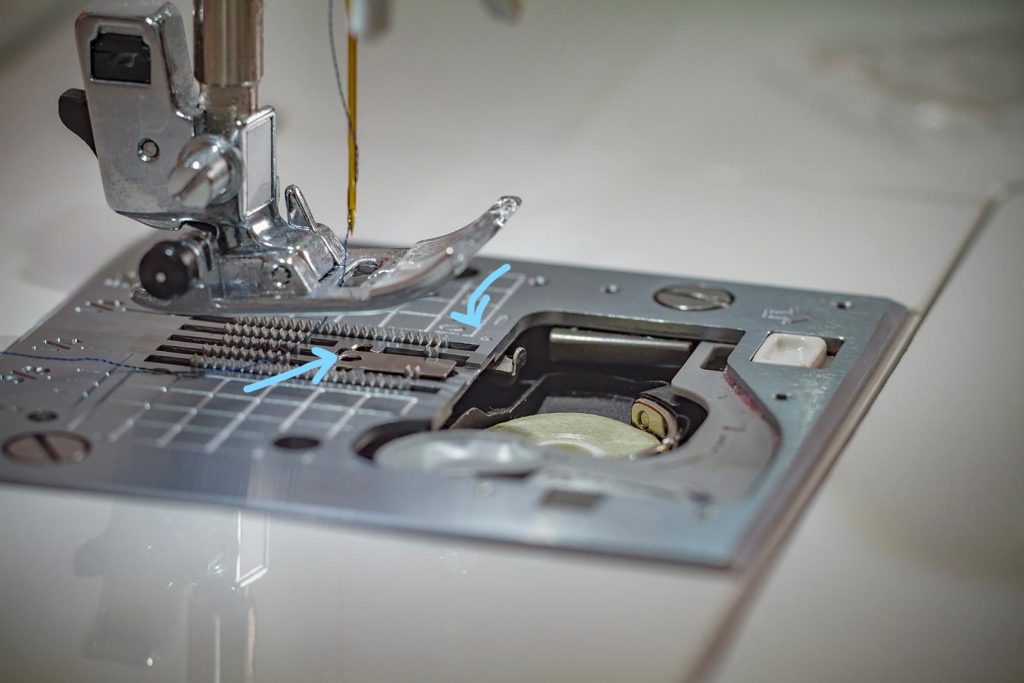
The lever in the DOT straight stitch position
Being able to adjust the size and shape of the needle hole from a dash to a dot makes all the difference in working with lightweight fabrics. When you need to use a zig zag stitch or any of the other specialty stitches, you simply slide the lever to the dash position to open the needle hole to the wider shape. It’s a very simple mechanical adjustment that takes 2 seconds and keeps lightweight fabrics from going down the rabbit hole.
Lightning bolt stretch stitch
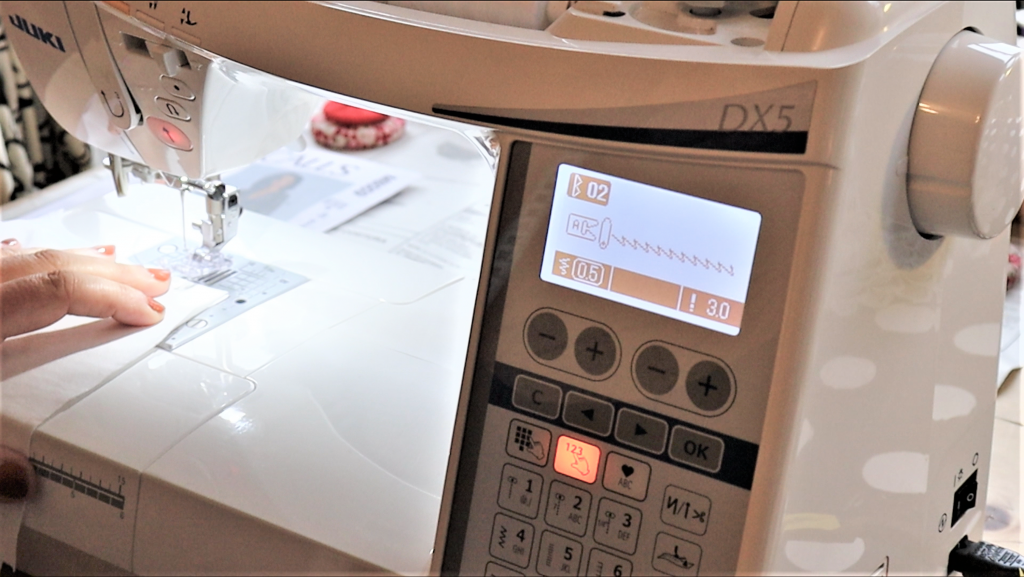
Sewing stretch fabrics also has its challenges. If the fabric moves and the thread doesn’t, the thread breaks. There’s a special stitch to resolve this issue called the lightning bolt stitch, because well… it looks like a lightning bolt. This special stitch is designed to move with the stretch fabric. Many machines have this stitch, but Kay noticed that the Juki lightning bolt stitch was the best she’d ever used. The lightning bolt stitch is ideal for knits, jersey or any stretch fabric because it creates a secure seam that gives when the fabric stretches.
The back story
This mother daughter dance costume collab has a three generation backstory. Kay caught her passion for sewing from her nan. Kay’s nan worked in a London theatre stitching costumes.
When Kay was little she would visit her nan in Kensington and stitch outfits for her barbie on her nan’s treadle sewing machine. Kay still has that treadle sewing machine and her nan’s sewing box too.
On the night before the film shoot Kay was adjusting Sophie’s costume. The back closure wasn’t holding together as Sophie moved. Kay decided that it needed hook and eyes to be more secure but she didn’t have any at home. Kay thought to check her nan’s sewing box, where she found exactly what she needed.
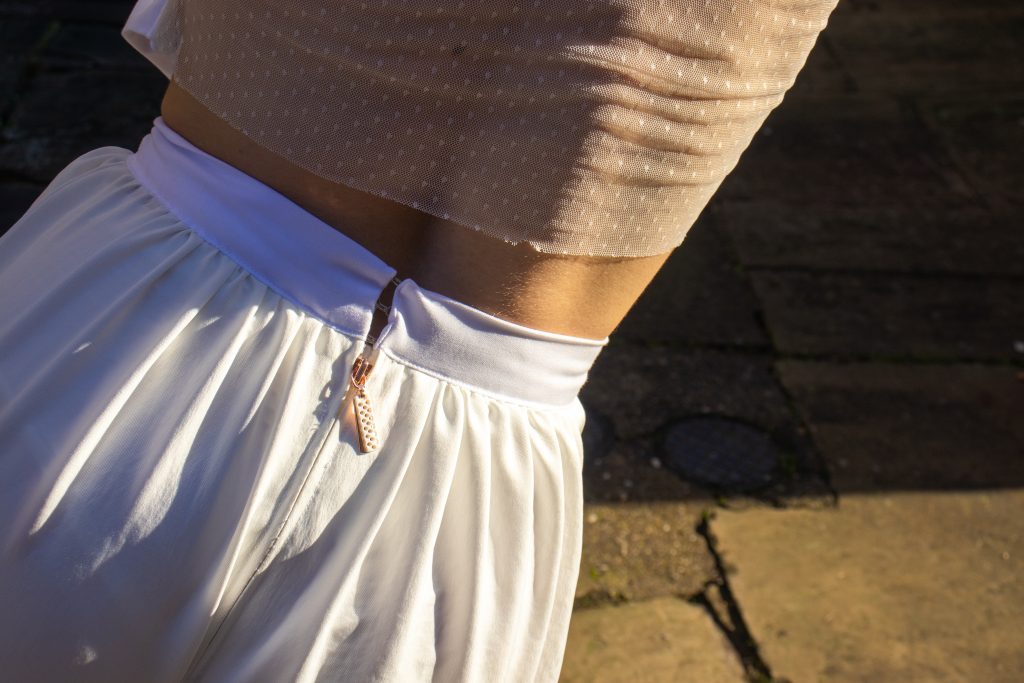
The film set
The medieval cathedral city of Lincoln makes a marvelous film venue. Sophie spent a day checking out possible film sites. When the film shoot day dawned blue and beautiful we were spoiled for choices.
Here’s Sophie having some fun with the wonky lamp post outside my favourite florist shop. You can see that we had fun filming this mother daughter dance costume collab. The medieval city served as a brilliant backdrop for Sophie’s modern dance. We thought that new meeting old was a lovely way to bring in the New Year. You can pop over to our Juki Club Instagram IGTV to see the completed video clip.
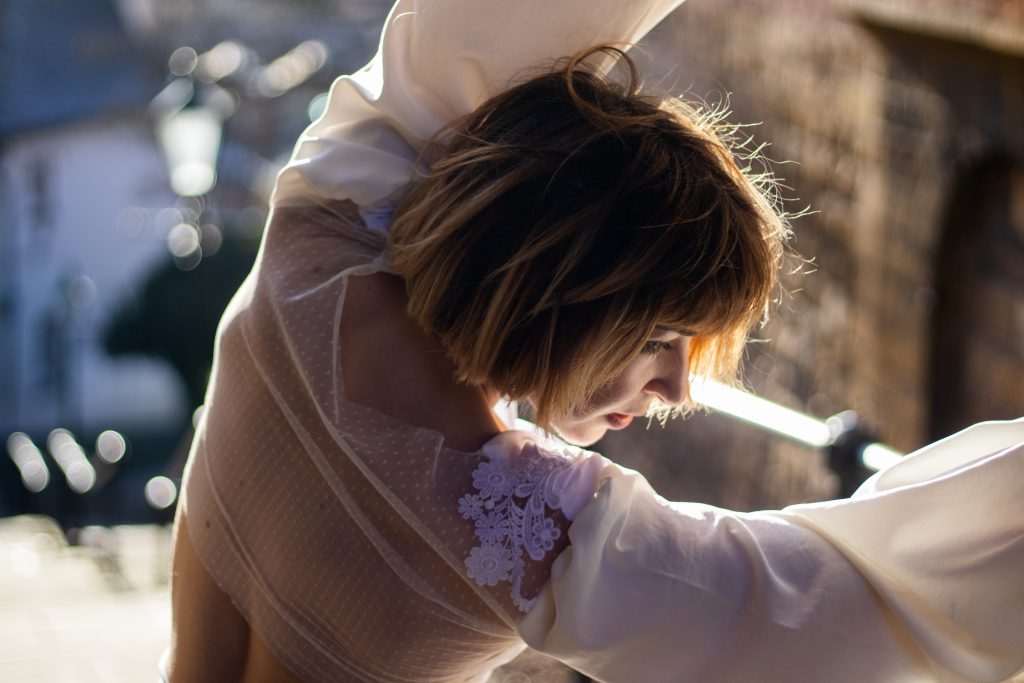
Happy New Year from all of us at Juki Club!

